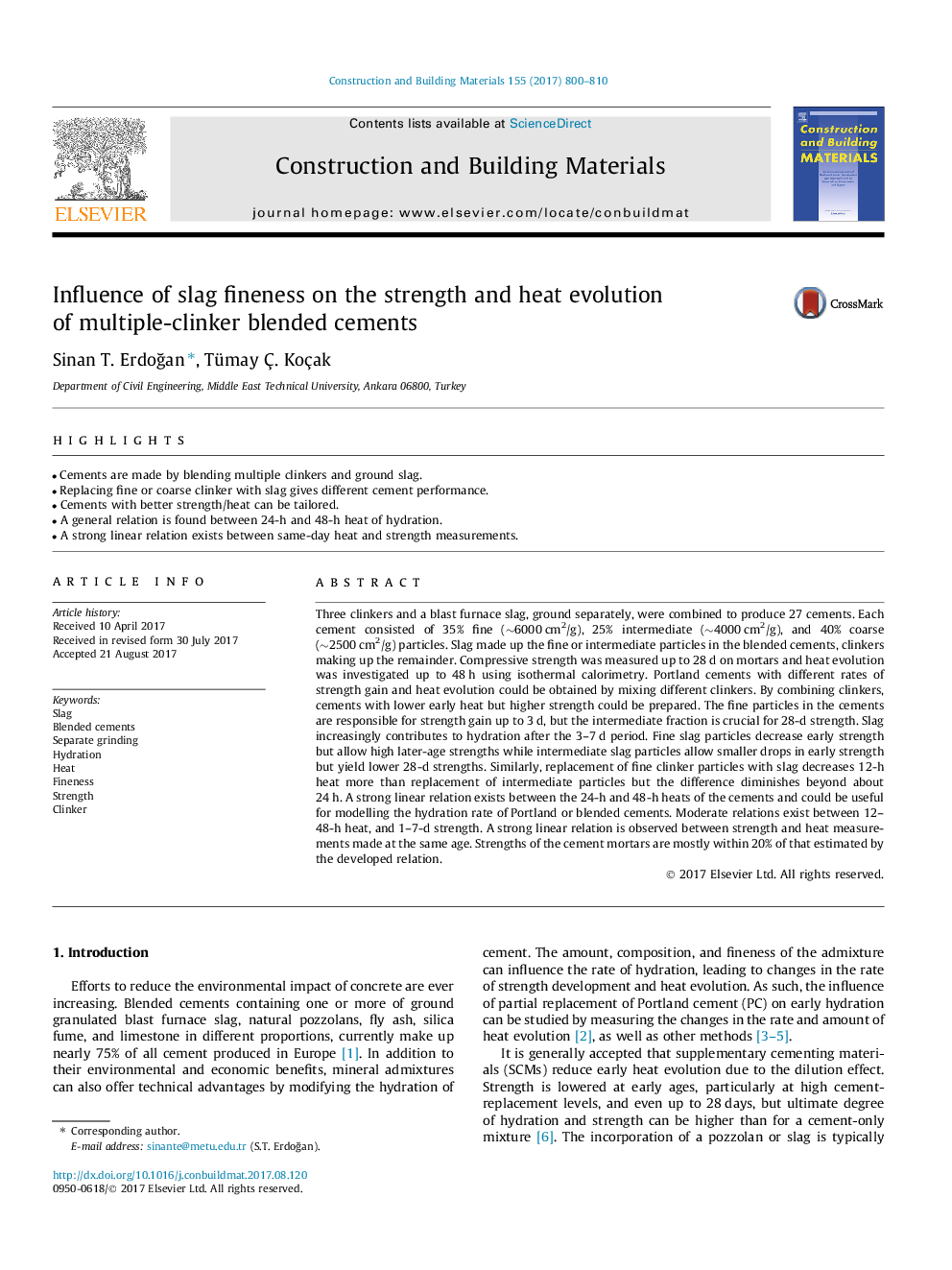| کد مقاله | کد نشریه | سال انتشار | مقاله انگلیسی | نسخه تمام متن |
|---|---|---|---|---|
| 4918121 | 1428751 | 2017 | 11 صفحه PDF | دانلود رایگان |
عنوان انگلیسی مقاله ISI
Influence of slag fineness on the strength and heat evolution of multiple-clinker blended cements
ترجمه فارسی عنوان
تاثیر ضخامت سرباره بر تکامل قدرت و گرما از سیمان مخلوط چند کلینکر
دانلود مقاله + سفارش ترجمه
دانلود مقاله ISI انگلیسی
رایگان برای ایرانیان
کلمات کلیدی
سرباره، سیمان مخلوط، سنگ زنی جداگانه، هیدراتاسیون، حرارت، تناسب، استحکام، کلینکر،
موضوعات مرتبط
مهندسی و علوم پایه
سایر رشته های مهندسی
مهندسی عمران و سازه
چکیده انگلیسی
Three clinkers and a blast furnace slag, ground separately, were combined to produce 27 cements. Each cement consisted of 35% fine (â¼6000Â cm2/g), 25% intermediate (â¼4000Â cm2/g), and 40% coarse (â¼2500Â cm2/g) particles. Slag made up the fine or intermediate particles in the blended cements, clinkers making up the remainder. Compressive strength was measured up to 28Â d on mortars and heat evolution was investigated up to 48Â h using isothermal calorimetry. Portland cements with different rates of strength gain and heat evolution could be obtained by mixing different clinkers. By combining clinkers, cements with lower early heat but higher strength could be prepared. The fine particles in the cements are responsible for strength gain up to 3Â d, but the intermediate fraction is crucial for 28-d strength. Slag increasingly contributes to hydration after the 3-7Â d period. Fine slag particles decrease early strength but allow high later-age strengths while intermediate slag particles allow smaller drops in early strength but yield lower 28-d strengths. Similarly, replacement of fine clinker particles with slag decreases 12-h heat more than replacement of intermediate particles but the difference diminishes beyond about 24Â h. A strong linear relation exists between the 24-h and 48-h heats of the cements and could be useful for modelling the hydration rate of Portland or blended cements. Moderate relations exist between 12-48-h heat, and 1-7-d strength. A strong linear relation is observed between strength and heat measurements made at the same age. Strengths of the cement mortars are mostly within 20% of that estimated by the developed relation.
ناشر
Database: Elsevier - ScienceDirect (ساینس دایرکت)
Journal: Construction and Building Materials - Volume 155, 30 November 2017, Pages 800-810
Journal: Construction and Building Materials - Volume 155, 30 November 2017, Pages 800-810
نویسندگان
Sinan T. ErdoÄan, Tümay Ã. Koçak,
